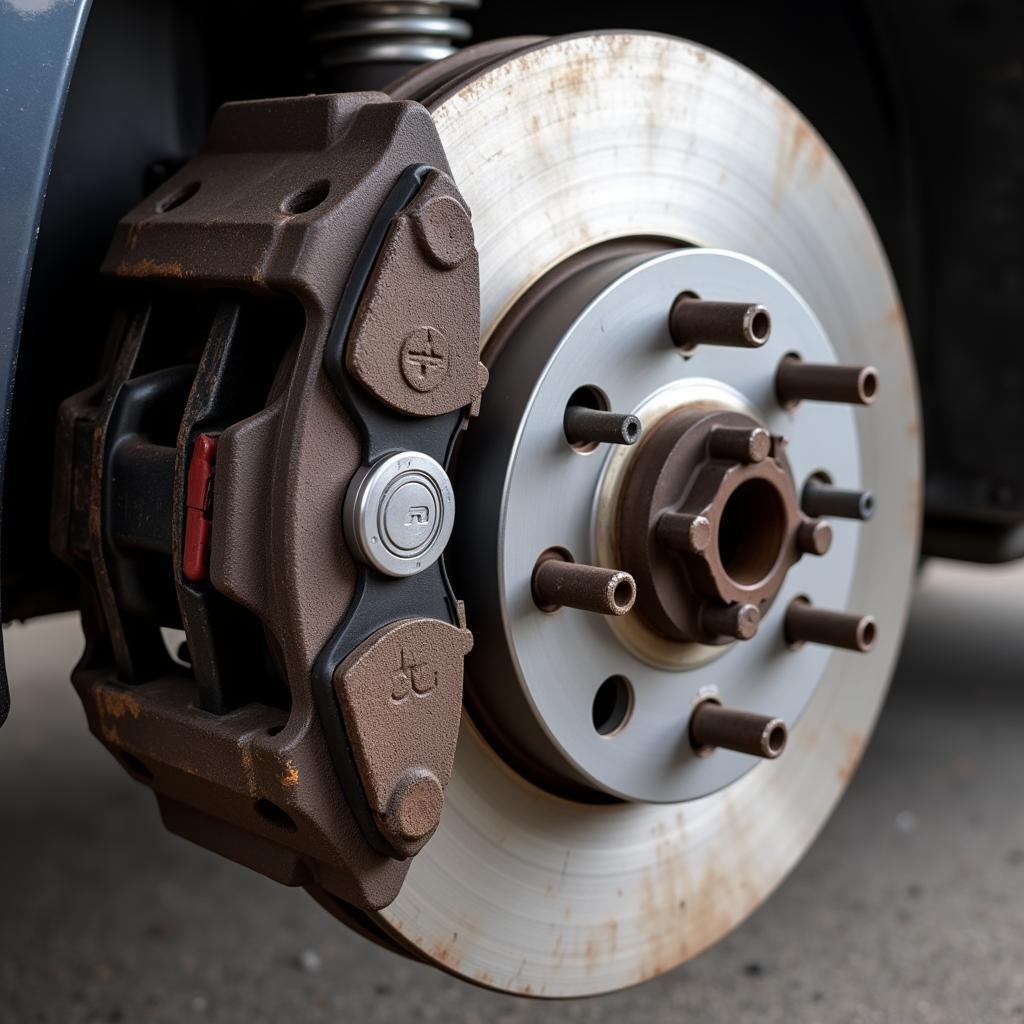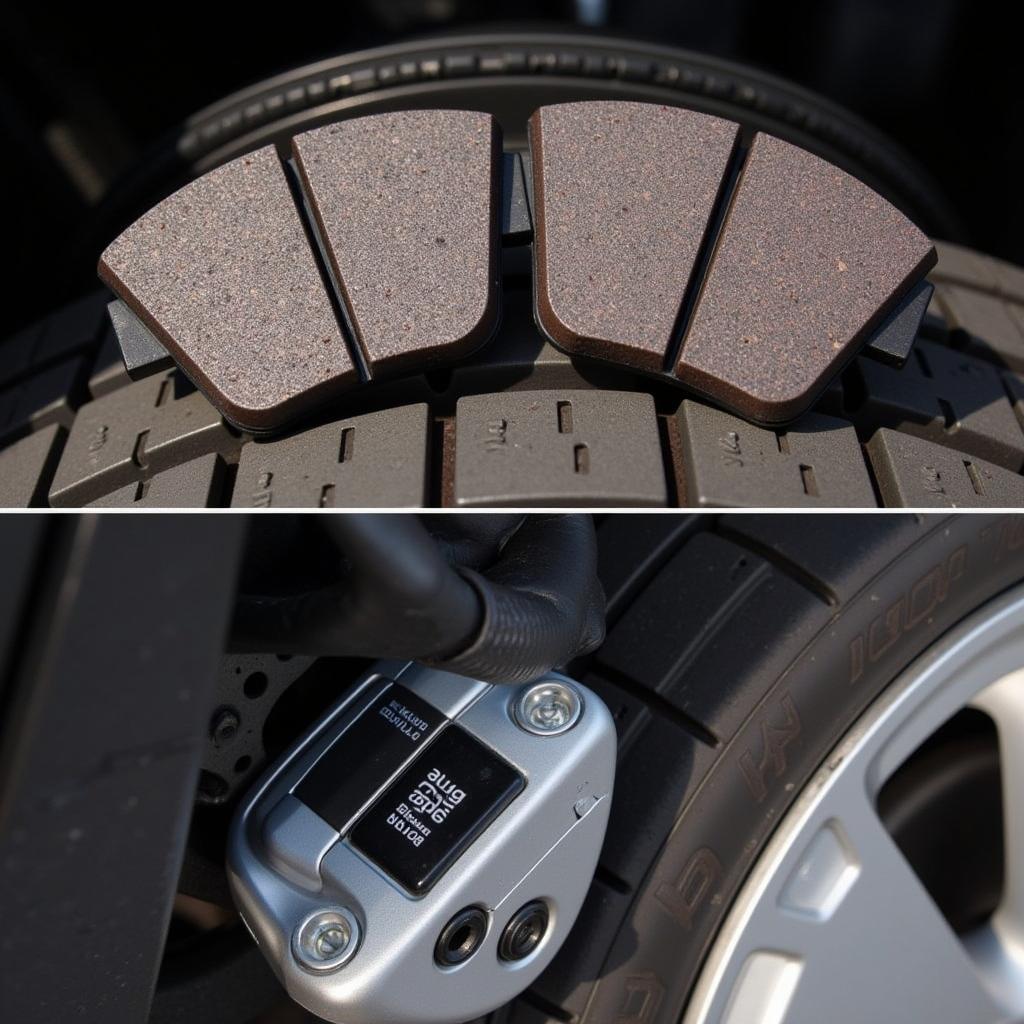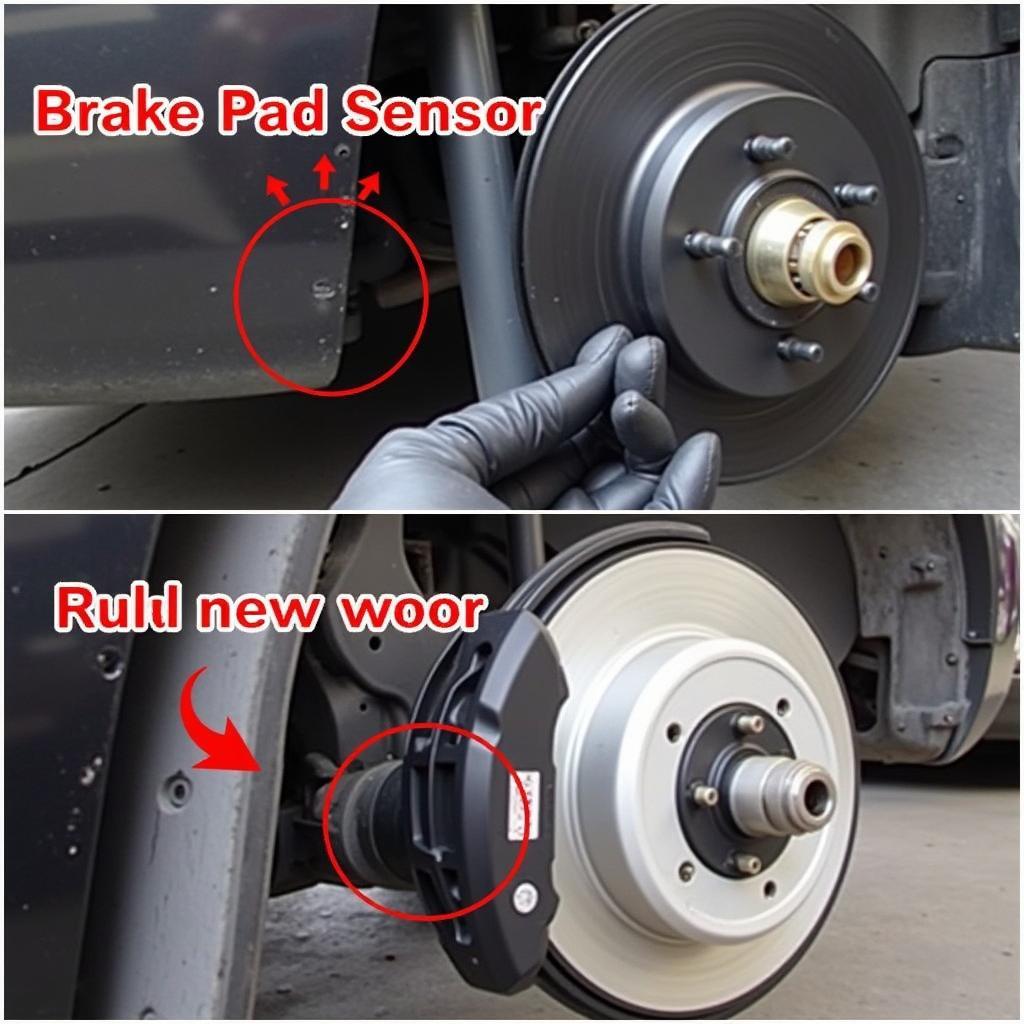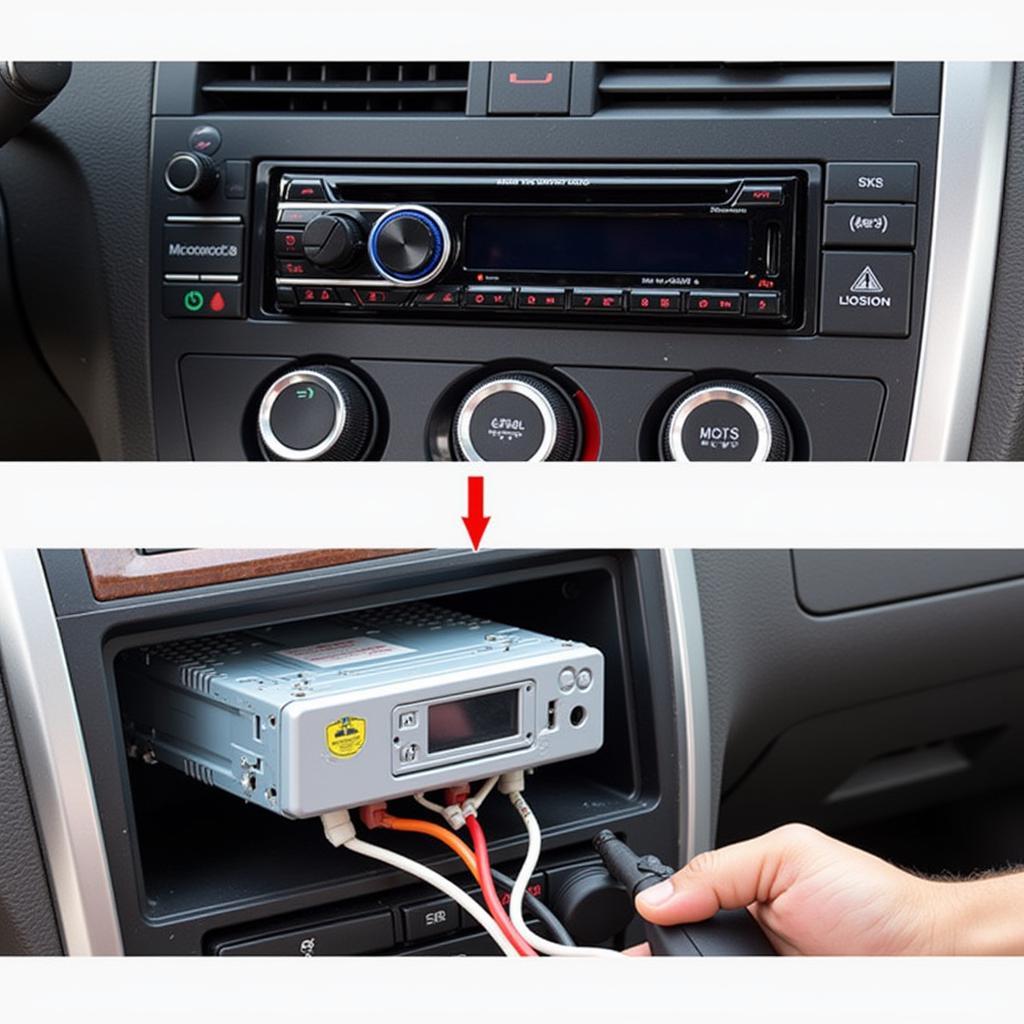The dreaded audi a3 brake pad warning can be a source of anxiety for any driver. This guide will walk you through everything you need to know about this warning, from understanding its causes and implications to diagnosing the problem and implementing solutions.
Understanding the audi a3 brake pad warning light is crucial for maintaining your vehicle’s safety and performance. Early detection and proper action can prevent further damage and ensure a safe driving experience. Check out more details on the audi a3 brake pad warning light.
This warning typically illuminates on your dashboard when your brake pads have worn down to a predetermined thickness. Ignoring this warning can lead to expensive repairs and compromise your safety.
Understanding Your Audi A3 Brake Pad Warning
The audi a3 brake pad warning system is designed to alert you when your brake pads require replacement. It’s a vital safety feature that should never be ignored. The warning system typically consists of a sensor embedded within the brake pad material. As the brake pad wears down, this sensor eventually makes contact with the brake rotor, triggering the warning light on your dashboard.
What does the warning light look like? It’s usually a circular symbol with an exclamation mark inside, often accompanied by the word “BRAKE”. It may be yellow or red, depending on the specific model and the severity of the issue. For more information on this, see our guide on the audi a3 8v brake pads warning light.
Diagnosing the Problem
While the illuminated warning light is the most obvious indicator, you might also notice other signs of worn brake pads, such as:
- Squealing or grinding noises when braking
- Reduced braking performance
- Vibration in the brake pedal
If you experience any of these symptoms, it’s important to inspect your brake pads as soon as possible. You can visually inspect the brake pads through the wheel spokes. A thin brake pad indicates the need for replacement.
 Worn brake pads on an Audi A3
Worn brake pads on an Audi A3
Addressing the Audi A3 Brake Pad Warning
Once you’ve confirmed that your brake pads are worn, you have several options:
- Replace the Brake Pads Yourself: This is a viable option for those with mechanical experience. Ensure you have the correct tools and follow the manufacturer’s instructions carefully.
- Take Your Car to a Mechanic: This is the recommended option for most drivers. A qualified mechanic can quickly and efficiently replace your brake pads, ensuring they’re installed correctly.
- Remote Diagnostics and Software Solutions: In some cases, a remote diagnostic scan and software update might be necessary. This is especially true for newer Audi A3 models with advanced braking systems. Learn more about this option by checking out how to reset the audi a3 brake pad warning light reset.
 New brake pads installed on an Audi A3
New brake pads installed on an Audi A3
Preventing Future Audi A3 Brake Pad Warnings
Regular maintenance is key to preventing premature brake pad wear. This includes:
- Avoiding hard braking whenever possible.
- Having your brakes inspected during regular service intervals.
- Using high-quality brake pads.
For other potential brake related issues, take a look at our article on audi a3 brake failure warning.
“Preventive maintenance is always the best approach,” says John Miller, a certified automotive technician with over 20 years of experience. “Regular brake inspections can save you time, money, and headaches in the long run.”
What if the warning light stays on after replacing the pads?
Sometimes, the warning light might persist even after new brake pads are installed. This could indicate a faulty sensor, a wiring issue, or a problem with the braking system’s control module. In such cases, a diagnostic scan is necessary to pinpoint the exact cause.
 Brake pad sensor on an Audi A3
Brake pad sensor on an Audi A3
“If the warning light persists after replacing the pads, don’t ignore it,” advises Sarah Chen, a leading expert in automotive electronics. “A diagnostic scan can quickly identify the underlying problem and prevent further complications.” You might find our guide on flashing brake warning subaru legacy helpful for general brake warning light troubleshooting.
Conclusion
The audi a3 brake pad warning is a crucial safety feature that shouldn’t be ignored. By understanding the system, diagnosing the problem, and implementing the appropriate solutions, you can ensure your Audi A3 remains safe and performs optimally. Regular maintenance and prompt attention to warning signs are essential for preventing future issues and enjoying a worry-free driving experience.
FAQ
-
How often should I check my brake pads? It’s recommended to visually inspect your brake pads every six months or 10,000 miles.
-
Can I drive with the brake pad warning light on? While technically possible, it’s highly discouraged. Driving with worn brake pads can compromise your safety and lead to more extensive damage.
-
How much does it cost to replace brake pads on an Audi A3? The cost varies depending on the model, year, and the type of brake pads used.
-
What are the symptoms of worn brake pads? Common symptoms include squealing or grinding noises, reduced braking performance, and vibration in the brake pedal.
-
How long do brake pads typically last? Brake pad lifespan varies depending on driving habits and conditions, typically lasting between 30,000 and 70,000 miles.
-
Can I replace just one brake pad? It’s recommended to replace brake pads in pairs (both front or both rear) to ensure even braking performance.
-
What is the difference between brake pads and brake rotors? Brake pads are the friction material that clamps down on the brake rotors to stop the vehicle. Brake rotors are the metal discs that the brake pads grip.


